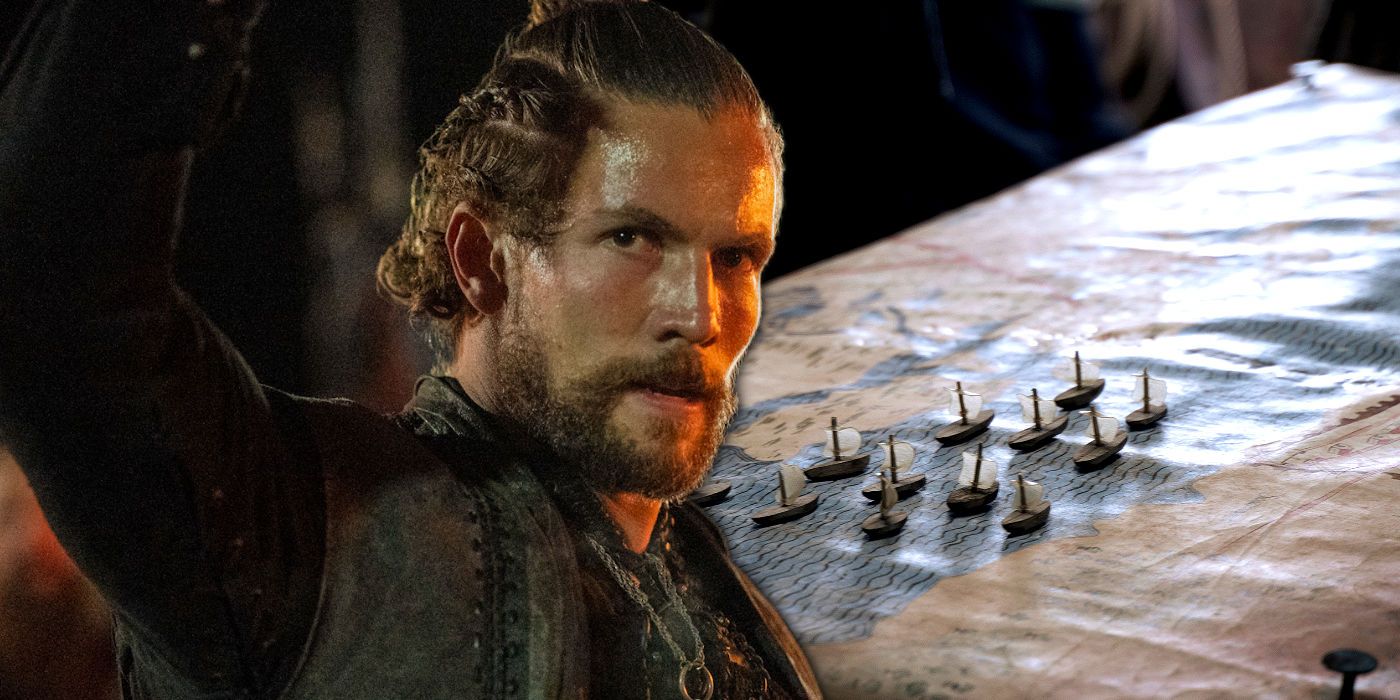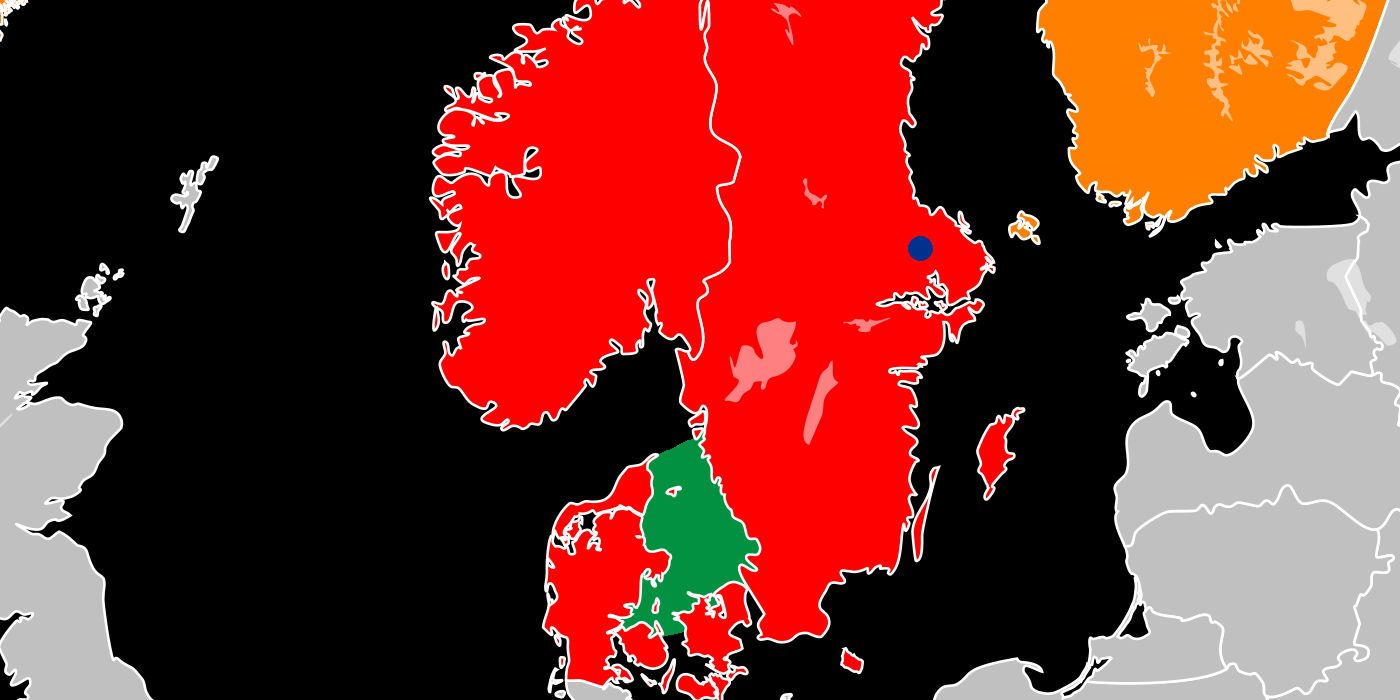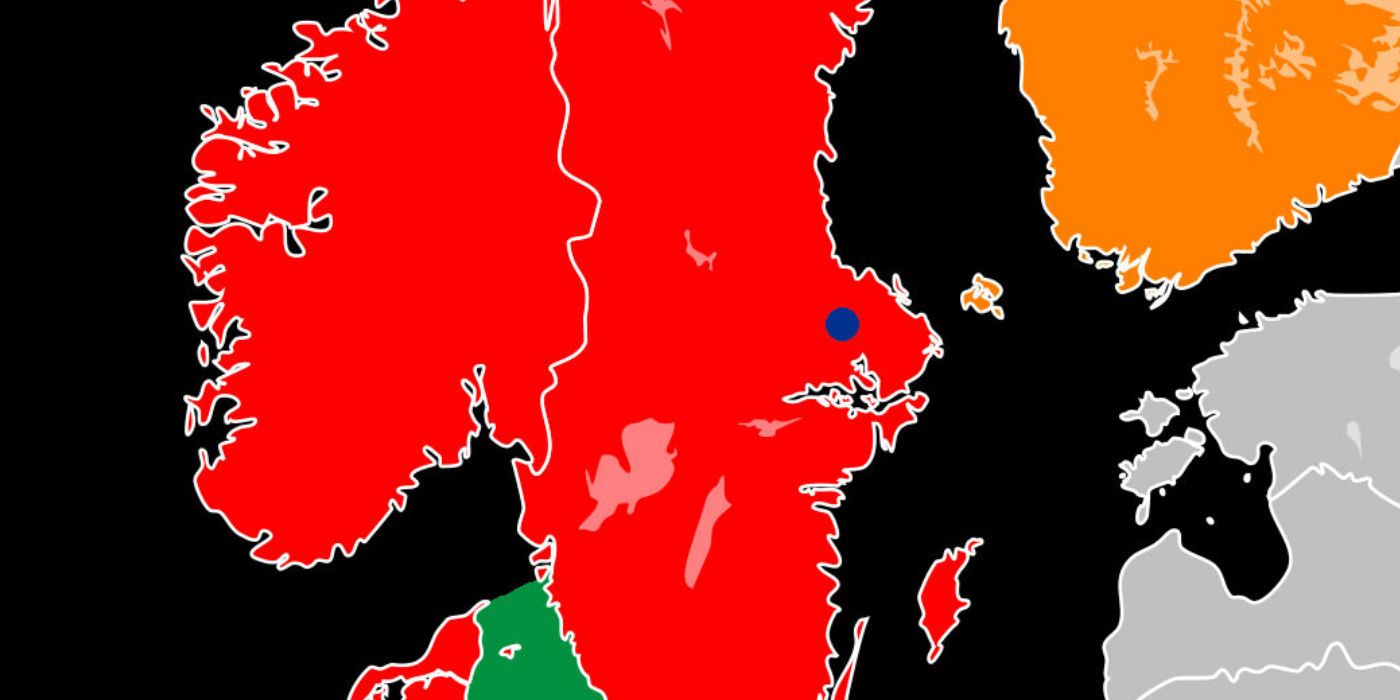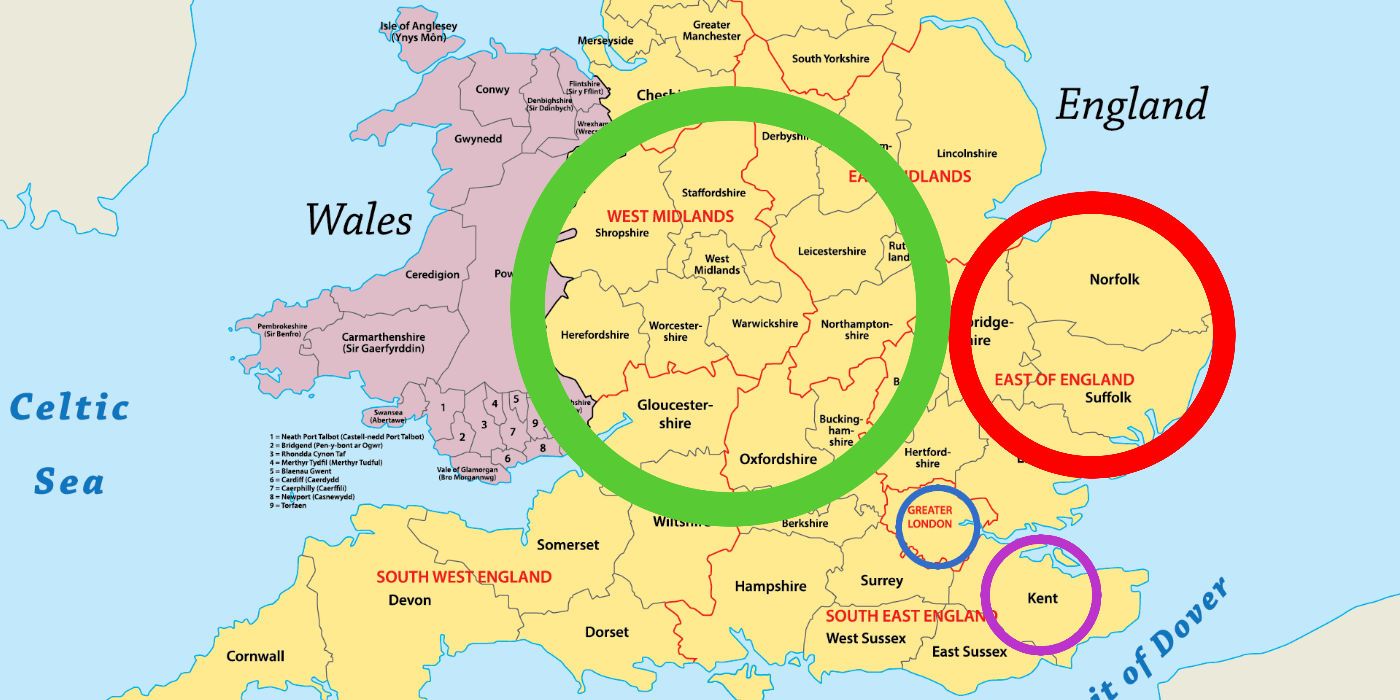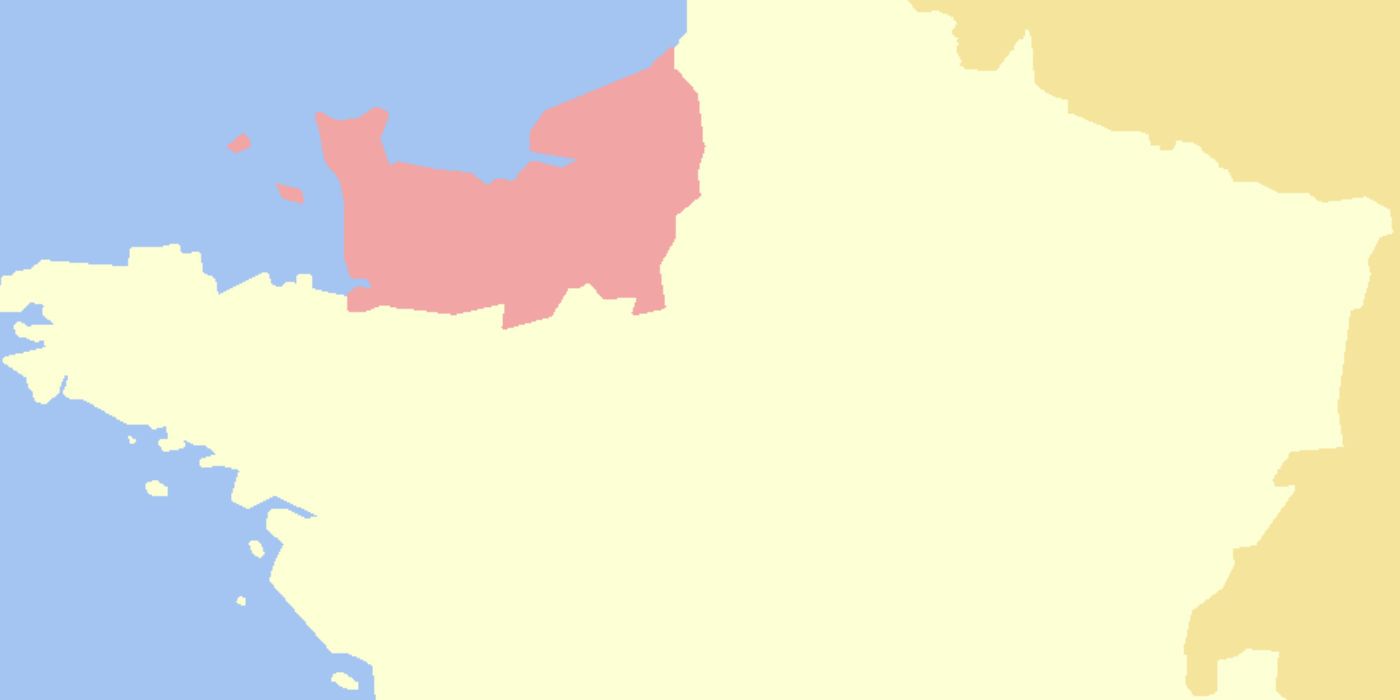Warning: Minor SPOILERS for Vikings: Valhalla.
The Vikings: Valhalla map isn't large and the number of locations visited aren't extensive, but it all can be a bit confusing given the story takes place a thousand years ago. Netflix's series is set a hundred years after the events of the original Vikings show and follows a new band of warriors, first beginning with their conquest to defeat England in retaliation for the St. Brice's Day massacre, in which an untold number of Danes were killed as ordered by England's king, Æthelred the Unready.
Much of the real world events are condensed in Vikings: Valhalla's timeline, allowing the series to make use of multiple people in one go while also streamlining the story. The way it's presented in Vikings: Valhalla season 1, King Canute of Denmark sent a call out for all Vikings to join him in his quest for vengeance, but in reality, it was his father, Sewyn Forkbeard, who sought that revenge first. And while approximately five months to one year go by throughout the first season, it was more like 12-13 years in real life, according to historical documents.
Still, Vikings: Valhalla remains true to the true story in many regards, at least as much as it's able to. The rest of the show's changes can be attributed to the lack of primary sources as well as dramatic effect — both of which apply to the Vikings: Valhalla map. Many locations in the series are and were real, but how accurate are the locations and how much does the series get right?
Is Kattegat Real? Why It's So Important To The Vikings
Perhaps the most important location in Vikings: Valhalla is Kattegat, a centrally-located stronghold in Scandinavia that holds strategic value for all Viking rulers. In-universe, anyone who controls that region can launch an invading force practically anywhere in the North Sea (which is why King Canute uses it as a staging ground for his campaign) — not to mention its geographical location is advantageous against its own invasions (hence why Olaf's plan to take over Kattegat was predicated on Harald's betrayal). Knowing all of that, Kattegat being real sounds too good to be true, especially since it was never brought up as an important place in real life, and that's because it isn't real.
In reality, Kattegat is a strait (green, above) located between modern day Sweden and Denmark. It's unclear exactly where the city of Kattegat is in the show, but it's likely somewhere on either the northeastern shore of Denmark or the southwestern shore of Sweden (though the latter is unlikely), based on various discussions from Vikings and Vikings: Valhalla, though it's impossible to say for sure. Despite not being a city, Kattegat was still important in the region since it was the main body of water that connected the Baltic region to the North Sea. Anyone who controlled that strait could effectively establish a blockade to multiple countries in the area.
Where Uppsala Is: Vikings: Valhalla History Explained
Unlike Kattegat, Uppsala is an actual place (blue, above), but much of its real history is unknown. The Norse temple is Uppsala's primary location in Vikings: Valhalla, existing somewhere in a mountainous region, whereas in real life, it was located in the plains. Based on works from the 11th and 13th centuries, as well as archeological discoveries over the years, the temple is located in what is now Gamlauppsala, just outside of the city of Uppsala — approximately 40+ miles north of Stockholm, Sweden. Assuming the location is the same in Vikings: Valhalla, it would present a conflict with Kattegat. The only way it'd make sense is if Kattegat is in Sweden instead of Denmark, but then that presents the question of why the King of Denmark would first go to Sweden.
Interestingly, Jarl Haakon in Vikings: Valhalla calls Uppsala the "most sacred site" in the Viking world, saying "everything there is holy," but she doesn't elaborate on why. Its true importance to Scandinavian history is left by the wayside in lieu of focusing on the Christian threat. Uppsala, particularly its temple, is said to be one of the oldest locations in the region and where Odin used to live, with Freyr performing human sacrifices there as well. Historical records indicate ruins were discovered in Gamlauppsala, where the temple would be, that supports the notion of human sacrifices to the gods, which viewers see in Vikings: Valhalla.
Valhalla's England: London, Mercia, Danelaw & Other Locations
The Viking histories of Kattegat and Uppsala draw the most interest because they're relatively unknown to viewers, but the locations of England's sites in Vikings: Valhalla are more straightforward, though still complex. England's map has changed numerous times throughout history, particularly from the 9th to 12th centuries when various kingdoms rose and fell; however, the general locations used in Vikings: Valhalla take place in the southern part of the country.
The Danelaw (red): At the start of the series, Vikings spread all over the Danelaw were killed during the St. Brice's Day massacre. While a specific location wasn't provided, it's presumed the "Viking settlement" seen in the series happens somewhere in the Danelaw region, which ranged from London to East Anglia during that period of time.
Kent (purple): Located to the southeast of London — and bordering the southern border of the city — Kent is one of the first places attacked by King Canute and his Vikings in Vikings: Valhalla.
London (blue): London in Vikings: Valhalla is where it's always been, in the southern part of England, and centrally located between Mercia, the Danelaw, and Wessex, all of which were unified under the Kingdom of England in the decades prior to the events of the TV series.
Mercia (green): Mercia's lands spread from north of London to around Chester, England, and approximately from Chilbury in the west to Warwick in the east. As with the Danelaw settlement, a specific location wasn't given as to where the Queen of Denmark visited in Mercia.
How Normandy Fits Into Vikings: Valhalla's Story (Not Just Emma)
Normandy hasn't played a large role in Vikings: Valhalla yet, but it may in subsequent seasons. The Duchy of Normandy, a vassal state in the northern part of the Kingdom of France, is primarily referenced in relation to Emma of Normandy, who was married to King Æthelred of England in the early 11th century. She was a descendant — the great-granddaughter — of Rollo, one of the most famous Vikings in history, and her family ruled over the Normans to the south of England. For now, she's the main connection to Normandy, but England's history shows that they'll play a bigger part in the story yet to come.
Emma of Normandy's brother, Richard II of Normandy, had a grandson who would become William the Conqueror — the first Norman to rule as England's king. Before that, around the time of King Canute's death, William became the Duke of Normandy in 1035, and approximately 30 years later, he invaded England and took over its monarchy. Since the show focuses mostly on the Vikings, it's possible this storyline will never come into play, but it would be a neat way to bookend the series if Emma and Normandy play larger roles.

